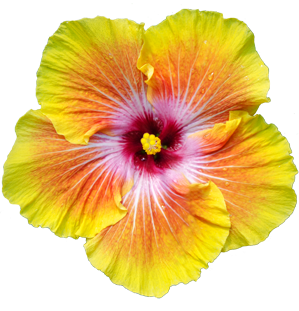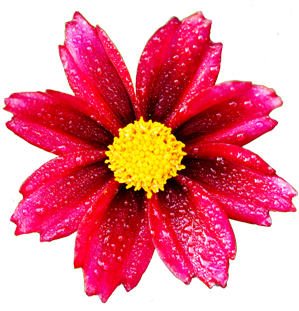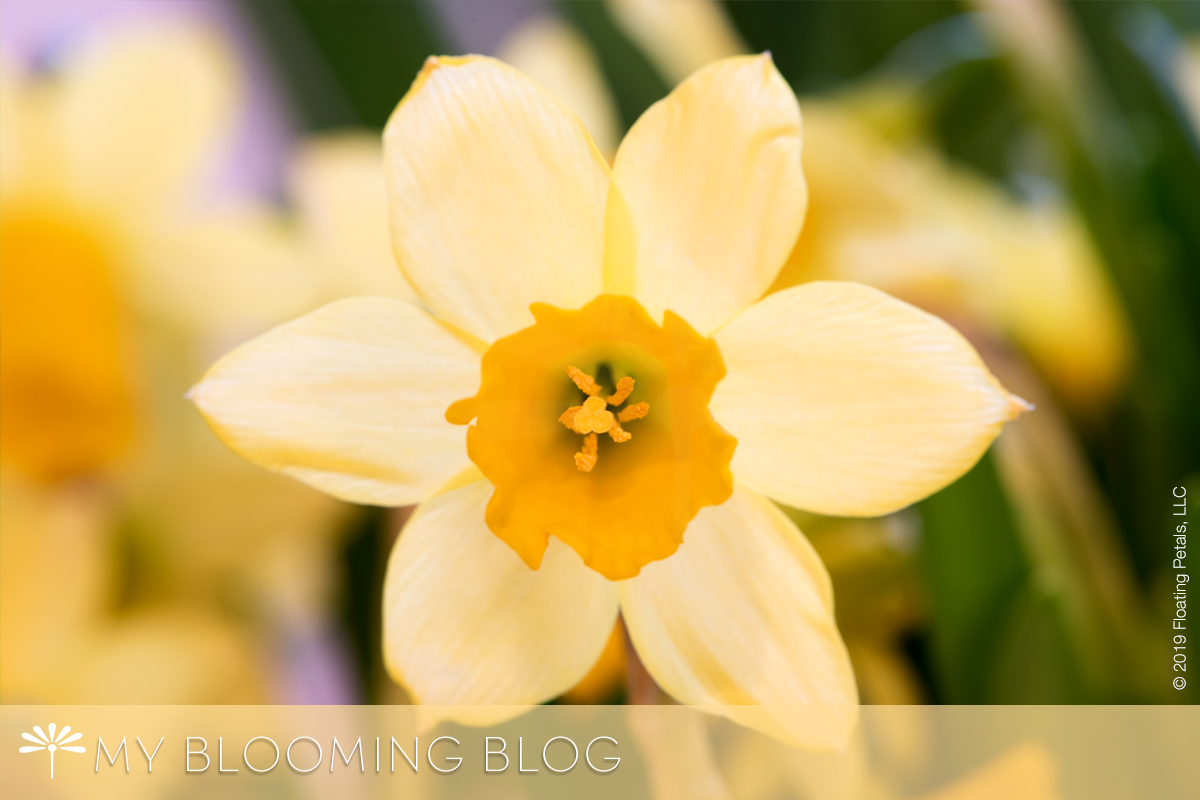
If you live in the Northeast in the United States like I do, you are dreaming of spring, as winter seems to get longer every year, and this year is without exception. Even those of you in the warmer climates like Tucson, Arizona or the Pacific Northwest have experienced a cold and even snowy winter. So, let’s have some happy, warm thoughts about spring and summer, starting with some of my favorite bulbs and blooms that I look forward to each year.
Tête-à-tête Daffodil
Mixing daffodils with other flowers in a bouquet may look pretty, but a sap that exudes from its stems can clog other flowers stems when absorbed. This sap does not allow the other flowers to stay hydrated, and they will wilt quickly, so it’s best to keep daffodils separate from other flowers in a bouquet.
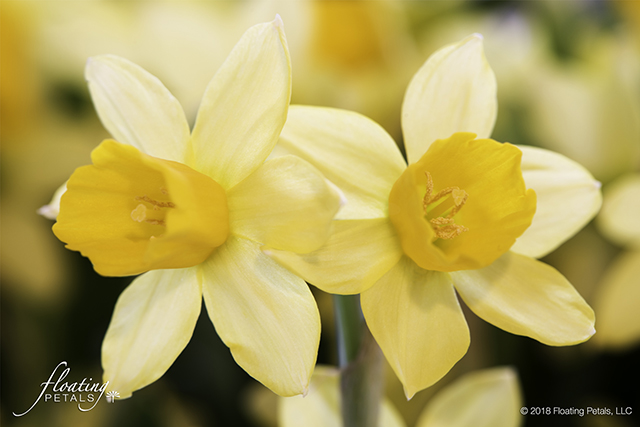 points for interest | A favorite dwarf and miniature daffodil, Tête-à-Tête, has a deep yellow cup emerging from golden, slightly reflexed, perianth segments. Foliage is deep green and sword-like. Stems are smooth and bear 1-3 flowers. This vigorous selection is wonderful for naturalizing, rock gardens or forcing. Blooms early spring.
points for interest | A favorite dwarf and miniature daffodil, Tête-à-Tête, has a deep yellow cup emerging from golden, slightly reflexed, perianth segments. Foliage is deep green and sword-like. Stems are smooth and bear 1-3 flowers. This vigorous selection is wonderful for naturalizing, rock gardens or forcing. Blooms early spring.
general care | Plant 6” deep and 6” apart. Best sited in deep, rich soil with full or part sun, but tolerant of many conditions. Average water needs while blooming, but allow to dry afterwards. Only cut foliage back when yellowed, to allow for replenishment of the bulb. Divide as needed in mid-summer to fall.
Grape Hyacinth
The violet blue cluster of flowers somewhat resembles a bunch of grapes, hence the common name, Grape Hyacinth.
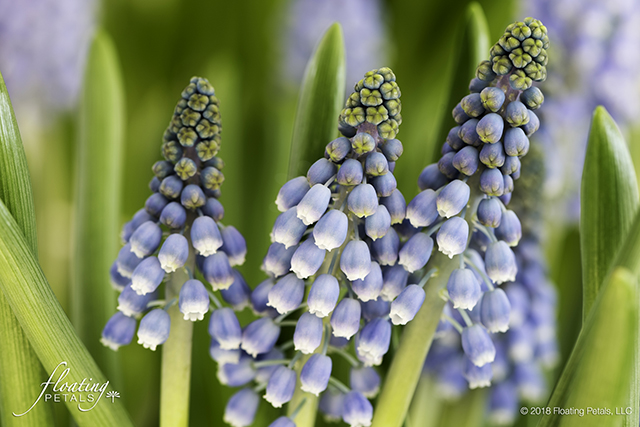 points for interest | In spring, bright blue, tubular flowers emerge in dense, conical racemes on smooth, leafless stems. Flowers have distinct, constricted white mouths. Leaves are narrow, 12” long, linear and mid-green, arranged in basal clusters. Grow in mass in a mixed border, in a deciduous woodland garden, for naturalizing or force indoors. Light musky aroma and deer-resistant.
points for interest | In spring, bright blue, tubular flowers emerge in dense, conical racemes on smooth, leafless stems. Flowers have distinct, constricted white mouths. Leaves are narrow, 12” long, linear and mid-green, arranged in basal clusters. Grow in mass in a mixed border, in a deciduous woodland garden, for naturalizing or force indoors. Light musky aroma and deer-resistant.
general care | Plant bulbs in groups, 4” deep in autumn. Site in moderately fertile, moist, well-drained soil in full sun or partial shade. Keep moist during growth. When plants are dormant in autumn, divide to maintain vigor. Easy to grow and spreads.
Angelique Tulip
When using an Angelique Tulip as a cut flower, replant annually, as cutting will diminish vigor.
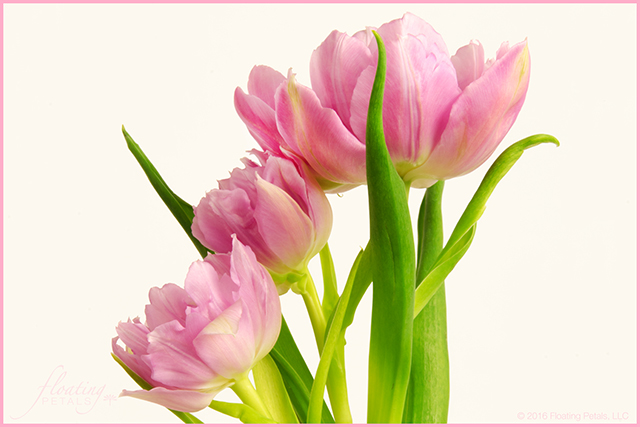 points of interest | An exquisite semi-double, or peony type, pale rose pink tulip flushed with darker and lighter shades and creamy-pink edges. Late flowering and bowl-shaped. The smooth stems may have 2-3 terminal flowers with broad, ovate, gray-green leaves, ascending alternately. Wonderful as a cut flower, in a flowerbed or forced indoors. Suitable for bedding or border.
points of interest | An exquisite semi-double, or peony type, pale rose pink tulip flushed with darker and lighter shades and creamy-pink edges. Late flowering and bowl-shaped. The smooth stems may have 2-3 terminal flowers with broad, ovate, gray-green leaves, ascending alternately. Wonderful as a cut flower, in a flowerbed or forced indoors. Suitable for bedding or border.
general care | Grow in fertile, well-drained, neutral to slightly acidic soil in full or afternoon sun. Requires a long winter for dormancy. Dislikes excessive moisture. Plant base of bulb to depth of 8” in autumn. Plant in groups 3” apart for maximum effect. Fertilize with a balanced mix after flowering. Deadhead, but allow foliage to yellow for about 6 weeks to restore the bulb.
Picotee Amaryllis
What we call “Amaryllis” aren’t true Amaryllis. These cultivated hybrids are actually Hippeastrum. True Amaryllis is a bulb from South Africa that looks more like a lily!
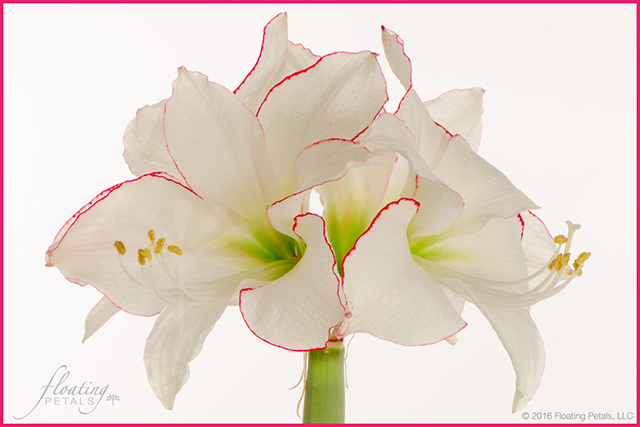 points for interest | This large-flowered Amaryllis hybrid has brilliant white petals, finely outlined in red with a chartreuse throat. Each bulb produces 4-6 boldly elegant flowers on a long stem. Easy to bring to bloom, Amaryllis is a favorite for indoor forcing.
points for interest | This large-flowered Amaryllis hybrid has brilliant white petals, finely outlined in red with a chartreuse throat. Each bulb produces 4-6 boldly elegant flowers on a long stem. Easy to bring to bloom, Amaryllis is a favorite for indoor forcing.
general care | Plant bulb in October-April in a pot with a nutritious composted soil tamped just below the neck of the bulb. Water and place in a warm, sunny location. Water sparingly until the stem emerges, then gradually increase to keep soil moist. After flowering in 7-10 weeks, allow leaves to emerge and grow throughout the summer, fertilizing regularly. Reduce watering and allow leaves to yellow in fall. Remove foliage and store bulb at 40-50 degrees F until repeating the process.
Chive
Chives are the only allium that is native to both the new and old worlds and is useful to control garden pests because of their insect-repelling properties.
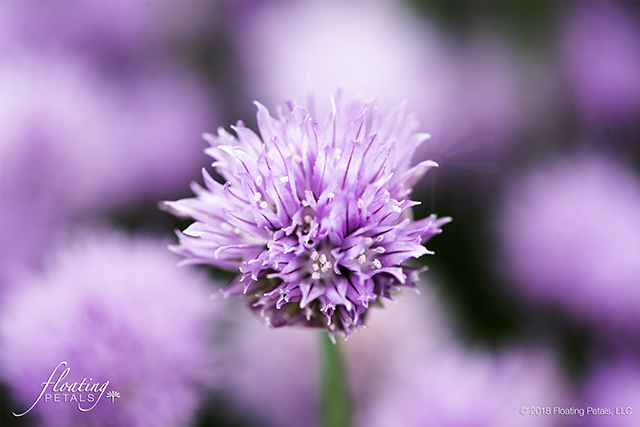 points for interest | Chives have edible, cylindrical, hollow dark green leaves that are pungent when crushed. Dense round umbels of up to 30 bell-shaped pale purple flowers appear in April-May in warmer climates and in June in cooler ones. Flowers are also edible and make a lovely garnish. Single bulbs produce clusters of offset bulbs, gradually forming clumps. Grow in front of a border, herb or rock garden.
points for interest | Chives have edible, cylindrical, hollow dark green leaves that are pungent when crushed. Dense round umbels of up to 30 bell-shaped pale purple flowers appear in April-May in warmer climates and in June in cooler ones. Flowers are also edible and make a lovely garnish. Single bulbs produce clusters of offset bulbs, gradually forming clumps. Grow in front of a border, herb or rock garden.
general care | Grow in fertile, well-drained soil in full sun. Plant in autumn, 2-4” deep. Keep dry when dormant. Easier to propagate by division than by seed.
Peruvian Daffodil
The Peruvian Daffodil is an amaryllis relative that gets its name from its parents origin and its daffodil resemblance.
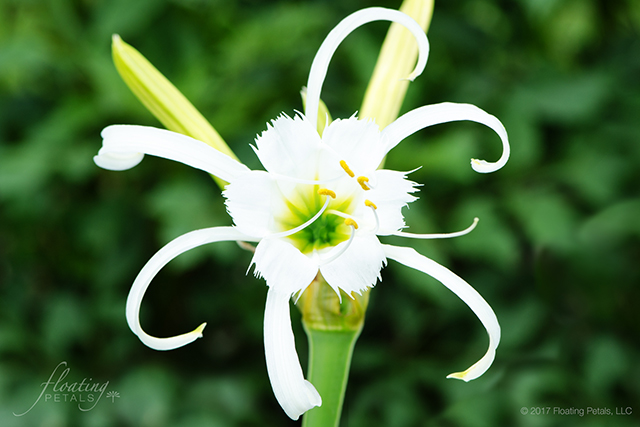 points for interest | From spring to summer, a long, smooth, tubular scape produces clusters of 2-5 spidery, scented white flowers. Six narrow, curving petals surround a fringed, wide cup formed from fused lower parts of the stamens. The basal leaves are 36” long, evergreen and oblong.
points for interest | From spring to summer, a long, smooth, tubular scape produces clusters of 2-5 spidery, scented white flowers. Six narrow, curving petals surround a fringed, wide cup formed from fused lower parts of the stamens. The basal leaves are 36” long, evergreen and oblong.
general care | Plant bulbs in autumn with neck and shoulder above soil level. Benefits from moderate to high humidity and bright, filtered or full light indoors or partial to full sun outdoors. Water freely during the growing season and apply a diluted balanced liquid fertilizer every 2-3 weeks. Keep just moist when dormant. Grow in a warm greenhouse where not hardy. In warmer areas, grow in a bed or border, at the base of a warm, sunny wall or in containers.
Drumstick Allium
Each Drumstick Allium contains up to 40, tightly packed, flowers.
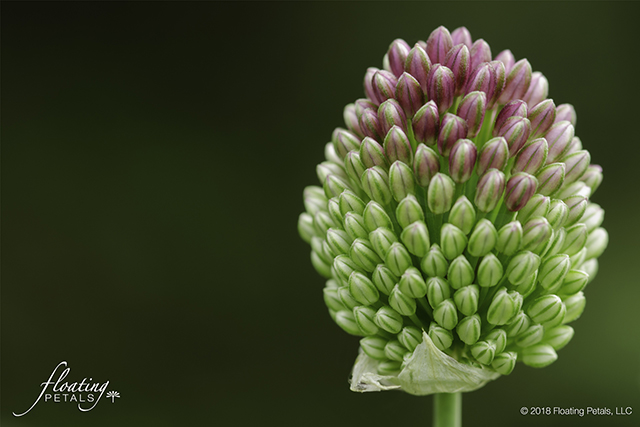 points of interest | In late spring to early summer, ovoid umbels of star-shaped flowers appear on stiff, leafless stems. Green flowers gradate from pink to dark clover red-brown at the top. Leaves are linear and long and pungent when crushed. Excellent planted in groups in a border, and where the flowers can rise above and foliage remains hidden. May naturalize. Attracts bees and butterflies. Useful as cut flower and can dry well. Like all alliums, and unlike most bulbs, alliums are deer resistant.
points of interest | In late spring to early summer, ovoid umbels of star-shaped flowers appear on stiff, leafless stems. Green flowers gradate from pink to dark clover red-brown at the top. Leaves are linear and long and pungent when crushed. Excellent planted in groups in a border, and where the flowers can rise above and foliage remains hidden. May naturalize. Attracts bees and butterflies. Useful as cut flower and can dry well. Like all alliums, and unlike most bulbs, alliums are deer resistant.
general care | In autumn, plant bulbs 4-6” deep in fertile, well drained soil. Site in fill sun.
Share with me below: What are your favorite bulbs or blooms of spring?
FEATURED FLOWER
Tete-a-Tete. Photographed @ My Studio.
Need moments in your week just for you, to connect to nature and bring the beauty of flowers into your view? Sign up for the Floating Petals newsletter for FREE and experience the 400,000+ flowers that petal our world.
previous post next post
- Archives

- January 2020
- December 2019
- November 2019
- October 2019
- September 2019
- August 2019
- July 2019
- June 2019
- May 2019
- April 2019
- March 2019
- February 2019
- January 2019
- December 2018
- November 2018
- October 2018
- September 2018
- August 2018
- July 2018
- June 2018
- May 2018
- April 2018
- March 2018
- February 2018
- January 2018
- December 2017
- November 2017
- October 2017
- September 2017
- August 2017
- July 2017
- June 2017
- May 2017
- April 2017
- March 2017
- February 2017
- January 2017
- December 2016
- November 2016
- October 2016
- September 2016
- August 2016
- July 2016
- October 2015
- September 2015
- August 2015
- July 2015
- June 2015
- May 2015
- April 2015
- March 2015
- February 2015
- January 2015
- December 2014
- November 2014
- October 2014
- September 2014
- Categories

- Autumn
- Bees
- Botanical Gardens
- Bulbs
- Butterflies
- Contests
- Cutting Room Floor
- Dirt
- Featured Flowers
- Featured Garden
- Featured Gardens
- Floating Petals
- Floral Travels
- Flower Gifts
- Friday's Flower Fact
- Gratitude
- Herbs
- Holidays
- Inspiration
- Latest News
- Lessons From Flowers
- Monday's Flower Quote
- My Garden
- Photography
- Seasons
- Seeds
- Spring
- Summer
- Tidbits
- Uncategorized
- Weather
- Weeds
- Wildflowers
- Winter


